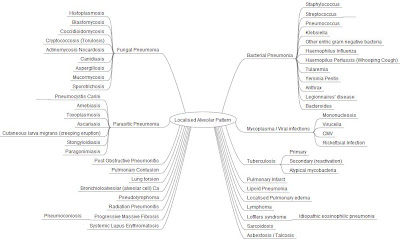paranasal sinus lesion
This is the DDx for a paranasal sinus lesion ..... i think also taken from the case review series .... How many times a radiologist would see a lesion in the PNS during a routine brain CT and tend to report it as sinusitis .... It would be helpful if you storm your brain and think about other differentials ... each one of these has a different appearance than the other .... The violet branch has been added by myself during studying of other diseases that I found it would be helpful to remember them during thinking about the DDx of a PNS mass ...





